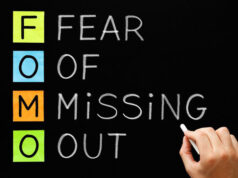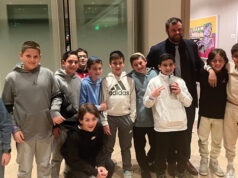
The overcast skies and threat of rain did not deter the excited crowd of community members that gathered on a June morning to mark a momentous occasion. They had all gathered on 67th Street in Bensonhurst, Brooklyn to witness the unveiling of a plaque that designated the Magen David Synagogue a New York City landmark.
The synagogue was designed by architect Maurice Courland and was constructed in 1920-21. It has long been an integral part of the community and is considered to be the “mother” synagogue. Besides the daily prayer services that have been taking place at the synagogue for over 80 years, it has been home to countless community and family events, both joyous, and unfortunately, tragic.
It should be understood the name Magen David Synagogue can be misleading because it was so much more than a synagogue. The synagogue has always been a center of Torah and purity, represented by the Talmud Torah, the mikveh and of course, the synagogue itself. And it has played host not only to weddings and bar mitzvahs, but to visiting dignitaries and some of the greatest rabbis of their respective generations.

The ceremony began with the introduction of speakers by Sherida E. Paulsen, AIA and chair from the Landmarks Preservation Commission. From the steps in front of the synagogue she introduced the morning’s first speaker, Rabbi Daniel. Rabbi Daniel talked about his past association with Ahi Ezer and how as a result, he had been to Magen David Synagogue on many occasions, mostly for funerals of community members. Rabbi Daniel pointed out that the spirits of all those who had passed away over the years were at the ceremony to honor this magnificent synagogue that has been used since the ’20s.
Chief Rabbi Shaul Jacob Kassin was next to speak. The Rabbi spoke about his amazement that 80 years ago, a handful of people had the foresight to build such a beautiful building—even by 21st-century standards. The Rabbi recalled how over the years, our community has come to unite many times in the main synagogue. In addition he made note of the fact that the synagogue has played host to a large number of happy occasions and dedications. Rabbi Kassin blessed us that we should hear only good news in the future, because we are a people of peace to the extent that even in our conversations, we begin and end with the word “Shalom”—peace. In closing, the Rabbi informed the crowd that the Jewish people as a whole cannot exist without peace and unity.
 Rabbi Benjamin Seruya took a trip down memory lane, fondly recalling his bar mitzvah in 1945, his wedding, and the bar mitzvot of his children—all of which took place at Magen David Synagogue. The Rabbi then proceeded to give a brief history of Sephardic Jewry in the United States. The major emigration of Sephardic Jews to the United Sates began in 1900 when Joseph Beyda came here from Aleppo. He quickly spread word that America was the place to go. Jews began arriving in large numbers from Damascus and Aleppo. Originally, many of the Jews who came lived on Manhattan’s Lower East Side. From approximately 1912-1914, a movement of Syrian Jews began to populate a number of Brooklyn neighborhoods. The Rabbi described a feeling of awe that he gets when he enters the synagogue, a feeling of the labor of love that went into the building’s construction and years of dedication.
Rabbi Benjamin Seruya took a trip down memory lane, fondly recalling his bar mitzvah in 1945, his wedding, and the bar mitzvot of his children—all of which took place at Magen David Synagogue. The Rabbi then proceeded to give a brief history of Sephardic Jewry in the United States. The major emigration of Sephardic Jews to the United Sates began in 1900 when Joseph Beyda came here from Aleppo. He quickly spread word that America was the place to go. Jews began arriving in large numbers from Damascus and Aleppo. Originally, many of the Jews who came lived on Manhattan’s Lower East Side. From approximately 1912-1914, a movement of Syrian Jews began to populate a number of Brooklyn neighborhoods. The Rabbi described a feeling of awe that he gets when he enters the synagogue, a feeling of the labor of love that went into the building’s construction and years of dedication.
Rabbi Moshe Shamah captured the essence of the synagogue when he said, “This edifice has had a major positive influence on many Jews of our community.” In the mid 1940s and 1950s, Rabbi Shamah prayed at the synagogue every Saturday, absorbing the tangible feeling of spirituality, and wondering, how did such a magnificent structure come into existence way back in the 1920s? The Rabbi said that though there were a number of financial struggles over the years, somehow the synagogue always prevailed. Rabbi Shamah pointed out that the synagogue can seat hundreds and can serve as a beacon to all of us for the rest of our lives.
City Councilman Simcha Felder, Chairman of the council’s Landmarks Commission, told about his personal connection to the synagogue and the community. Fifty years earlier, his father was an assistant to Chief Rabbi Jacob Kassin ZT”L. The councilman found it very touching that the first landmark dedication that he was presenting in his district was the Magen David Synagogue. Mr. Felder also recognized the much appreciated presence of members of the New York Police Department’s 62nd Precinct. The policemen, who were on hand to provide security, included Sergeant Collins and Officers Quelly and Borkovsky. It is always reassuring to see some of “New York’s Finest” helping our community to remain safe.
Synagogue President Eddie Levy spoke about how proud the congregation was to receive the honor. As he put it, “Who would have dreamed the Magen David Synagogue would get landmark status from the greatest city in the world?”
Sam Catton joined Mr. Levy on the steps of the synagogue and boldly declared, “The Syrian Jewish community was born in this synagogue, and the Talmud Torah next door.” Mr. Catton spoke about two specific events in the history of the synagogue. The first occurred on June 6th, 1944. As most people know, that date, known as D-Day, marked the Allied invasion of Europe, when our troops landed on the beaches of Normandy. People in the community began to arrive at the synagogue at 2:00 in the afternoon, to pray for the success of the invasion and the safe return of their loved ones. By 6:00 in the evening, the synagogue was packed. After evening services, the congregants learned of the success of the allies. Mr. Catton also recalled June 6th, 1967, when the community learned of the outbreak of the Six Day War in Israel. People literally ran to the synagogue to pray and try to get any details on the situation. Those gathered soon learned that the Israelis had destroyed the Egyptian air force before they got off the ground. Mr. Catton ended his speech by praising the city of New York and the United States, for without its religious freedom and tolerance of all people, this ceremony would never have taken place. Finally, he led the crowd in an emotional rendition of “G-d Bless America.”
Susan H. Ball, chairman of the New York Landmarks Preservation Foundation, read the dedication plaque after it was unveiled. For those who were there, it was truly a historic and moving experience to see such an important part of our history become a New York City landmark. A grand icon from the past can now live on forever.



